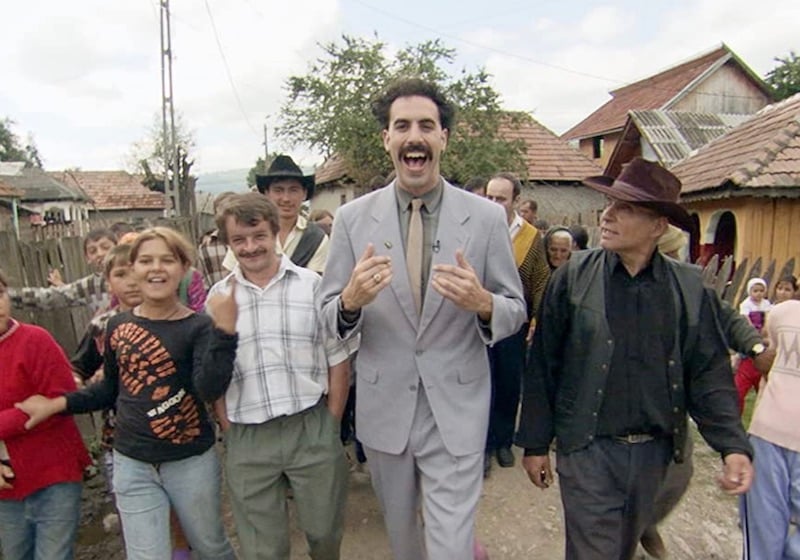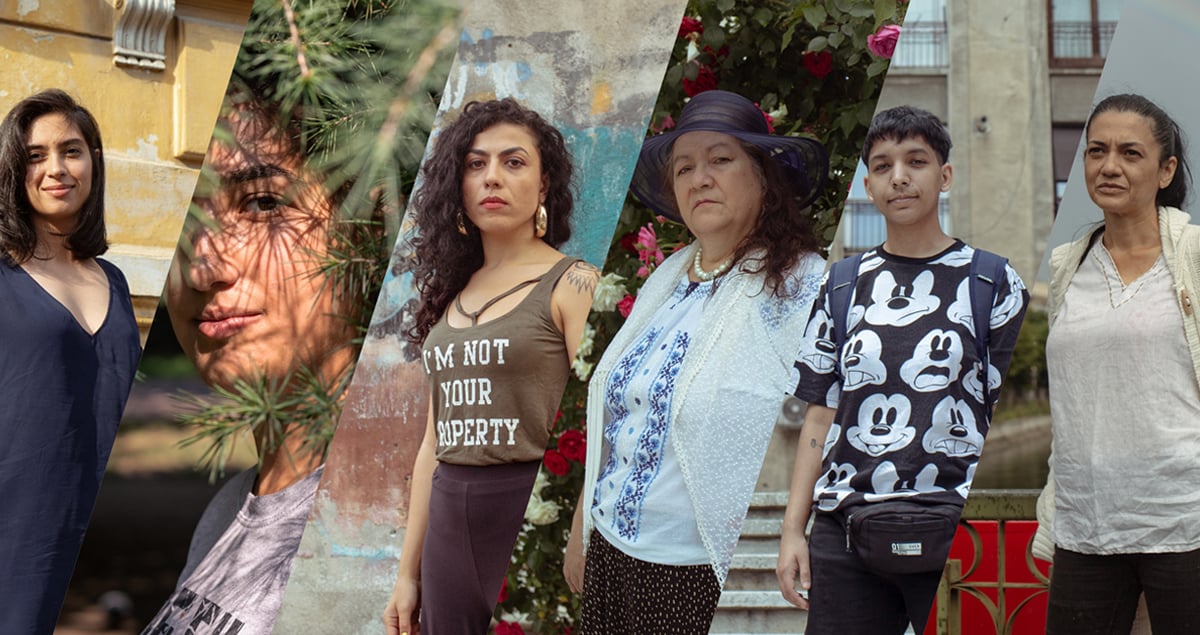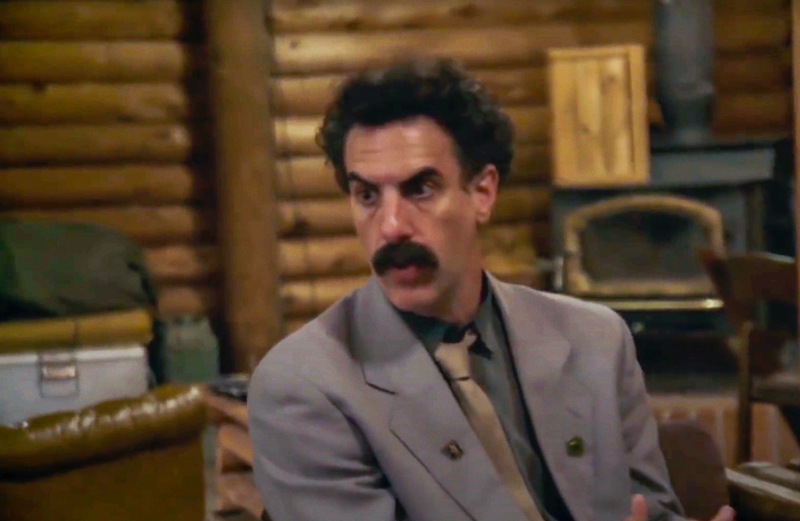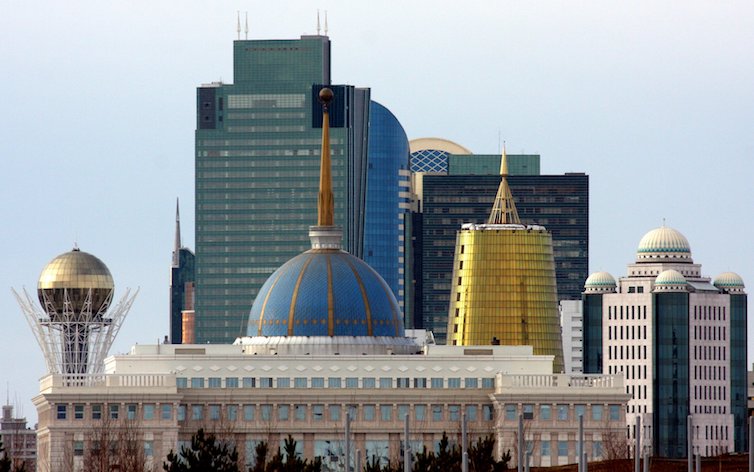Why it’s time to talk about Borat’s Roma problem

The jokes in Sascha Baron Cohen’s infamous mockumentary usually fall on the bigots, not the victims, of oppression. But a lack of real Roma representation means that while other communities get to see themselves humanised onscreen, anti-Roma quips instead reinforce dangerous stereotypes.
For a whole generation, the phrase “very nice!” is forever attached to comedian Sascha Baron Cohen, dressed in a lime green mankini, a full mustache, and two thumbs up. When mockumentary Borat: Cultural Learnings of America for Make Benefit Glorious Nation of Kazakhstan came out in 2006, its sheer quotability — along with a barrage of lawsuits from its unwitting co-stars — turned the film into an instant classic. It’s also stood the test of time: 15 years later, people are still using Borat’s voice and catchphrase to refer to their partners (“my wife!”) and the movie’s satirical version of the Kazakh national anthem continues to accidentally replace the original at major sporting events.
Borat and its newly-released sequel, Borat: Subsequent Moviefilm, are funniest when they present an uncensored view of their subjects. Baron Cohen’s character acts as a microscope and a mirror for the racism that pervades both American and European cultures. His character is an absurd version of a bigot, so comically intolerant that we can laugh it off. Those of his subjects who take him seriously respond in kind, revealing their own bigotry.
One of Borat’s frequent targets in these are “gypsies,” taken to mean Roma people. The term is a catchall for a host of smaller communities, all of whom descend from a group of people who migrated from the Indian subcontinent in the 14th century. The groups settled throughout Europe, with most living in the Balkans and Eastern Europe. For centuries, the Roma have faced discrimination and persecution, leaving them culturally isolated and impoverished.
Borat’s Roma are an abstract concept to laugh at, the human stakes of which are never seen
But the films’ jokes about the Roma differ from its quips about other minorities because it doesn’t give Roma people the opportunity to present themselves. Members of the LGBTQ+ community and Jewish people — two other groups targeted by Borat’s ramblings — all appear on camera as a counterpoint to their racist portrayals. But there are no Roma characters, and the only Roma people in the film appear in a passive role — in the villages which stand in for an imagined version of Kazakhstan. Borat’s Roma are an abstract concept to laugh at, the human stakes of which are never seen. In fact, the Roma only appear as an inflection point through which to discuss other issues like racism, misogyny, and antisemitism. Perhaps accidentally, the film doubles down on harmful stereotypes that have been used for centuries to persecute the Roma and kept them on the margins of European society.
“From the early middle ages, Roma people have had the fears of majority Europeans projected onto us, as outsiders who are easy to stereotype and scapegoat,” says Jonathan Lee of the European Roma Rights Centre. “These stereotypes of ‘gypsies’ with dark powers, primitive cultural practices, and immoral tendencies are as old as the hills and are a constituent of European society.”
That’s not to say the film is universally hated by Romani people — in fact, many of those who I talked to felt conflicted about the film. “He’s a genius, man,” says Alex Fechete, a Roma health worker who lives in Cluj-Napoca, Romania. “I don’t think it was an attack. I don’t feel bad when I see it. So, I don’t think he has bad intentions, but [his jokes] also don’t help.”
A still from Borat: Subsequent Moviefilm, (2020)
The film’s negative stereotypes misrepresent the region as a whole and reflect a broader blind spot in Americans’ knowledge of the post-Soviet world. But Borat’s lack of representation packs a particularly unpleasant punch to the already marginalised Roma on a number of occasions. In the original film, Borat gives viewers a tour of his fictional hometown. We meet his sister, Natalya, (“number four prostitute in all of Kazakhstan!”) and Livamuka Sakonov (“town mechanic and abortionist”). The only problem: none of the actors knew they were playing these parts. In reality, these are the actors’ homes in Glod, a rural Romainan village with a largely Roma population. “Most of the people from the village weren’t aware that this is a comedy, and didn’t know they’d be presented to the public as ‘bad people,’” says Ciprian-Valentin Nodis, a Roma rights activist from northern Romania.
After Borat came out in 2006, the villagers of Glod sued the producers. They claimed that they were told that they’d be extras in a documentary, but not that they’d be portrayed in a degrading manner. Most of all, they were angry that their poverty, which is itself the result of centuries of structural inequalities, had been publicly mocked. In the process of creating a film mocking bigotry, the producers had actually taken advantage of that intolerance — and the poverty that emerges from structural racism — for their comedy.
But if the franchise’s second outing proves anything, it is that these lessons have not been learnt. The “Kazakh” scenes in Borat Subsequent Moviefilm were also filmed in a rural, largely Roma village in Romania. While it’s unclear whether the villagers of Valea Albeștiului were on board this time, the film still uses the Roma village as a backdrop for Borat’s jokes, without actually representing any of the residents.
At one point, Borat goes out to the yard to talk to his daughter, who lives in the pig pen. The humor here relies on the viewer’s understanding of misogyny as backwards. But it’s also based in a widely-held misconception that the Roma live with their animals. Had the Roma villagers been able to present themselves honestly, or had the film chosen to include Roma actors, this scene might be read differently. But Roma people don’t appear here — in fact, the film doesn’t acknowledge that it’s trafficking in a stereotype of the community. Instead, the film uses these stereotypes (which viewers might not even be aware of) to challenge what it considers to be a “more important issue” of misogyny.
The same holds true for stereotypes of Roma dark magic, which abound in both films. A recurring gag is Borat’s vial of “Gypsy tears,” which protect him from “Jewish curses” or “AIDS”. But by mocking Borat’s antisemitism and homophobia in that way, the producers further the belief that Roma people have supernatural abilities, something that has often seen the community exoticised and othered; as early as 1554, England instituted rules that banned “Roma magic” and frequently executed those who “broke” the law. The idea that these powers could be harnessed, and therefore controlled, was a means of assuaging fears of the Roma and asserting authority over them.
A still from Borat: Subsequent Moviefilm, (2020)
These clumsy missteps are perhaps most notable in Borat’s many jokes about the Holocaust. On the whole, these quips are humanised by the fact that Sacha Baron Cohen himself is Jewish. Not only is laughing about one’s own oppression a hallmark of comedy, but for Jewish comedians like Baron Cohen, it’s also historically been a way of grappling with antisemitism. When Borat maligns the Jewish community, Baron Cohen relies on the audience’s own intuition to make sure they realise it’s a joke on the bigot and not the victim. When Borat visits a synagogue dressed as a stereotype of a Jew, the Holocaust survivors he meets welcome him with open arms in what is meant to be a heartwarming moment.
But this stands in stark contrast to the film’s treatment of the Roma’s experience in the Holocaust — an often-forgotten part of the war. At a hardware store, Borat asks the store owner how many Roma he could gas with a single propane tank. The conversation between the store owner and Borat carries on for several excruciating minutes as they go into detail about how many people are in the van, and whether propane would truly be effective.
“If you grow up in one of these countries [that have a large Roma population], it’s embedded in your mind — that Roma, or țigani, or Gypsies are something bad”
It does not mention that between 1939 and 1945, around half a million Roma were rounded up and sent to concentration camps where they were killed in gas chambers. Because the number of Roma deaths are dwarfed by the 6 million Jews killed in the Holocaust, and because exterminating the Roma wasn’t part of the Final Solution, the genocide of the Roma has largely been forgotten. Had there been Roma representation in the film, this joke would’ve been a powerful way of bringing attention to this largely unknown atrocity. But that’s not the case: it is nothing more than a jumping off point to talk about other issues.
The Roma population in the United States stands at roughly 0.3 per cent, which is likely why American audiences view the Roma people an abstract concept — as well as why Borat’s jokes about the Roma haven’t ruffled many feathers outside of the Roma community. But these stereotypes, no matter how absurd they are, still figure into many contemporary conceptions of the Roma, particularly in Europe. Nobody in the US would realistically believe that Kazakh government scientist Doctor Yamaka proved that a woman’s brain is “the size of squirrel”. But common, absurd stereotypes of the Roma as possessing dark powers or working as child snatchers are still widely held, and result in real violence. Ultimately, these are stereotypes that Borat has shamelessly leaned into, rather than try to expel.
“Some of these stereotypes seem on the surface to be obviously ridiculous, but they frequently have real world consequences,” says Lee, pointing to a widely-circulated piece of fake news that “gypsy child snatchers” were stealing children in France. “Angry mobs gathered and attacked Roma on the street, burned vehicles and demanded that they leave the area,” he said.
“If you grow up in one of these countries [that have a large Roma population], it’s embedded in your mind — that Roma, or țigani, or Gypsies are something bad,” says Nodis. “It’s culturally accepted, even by the media and the literary world, that these representations are accurate.”


